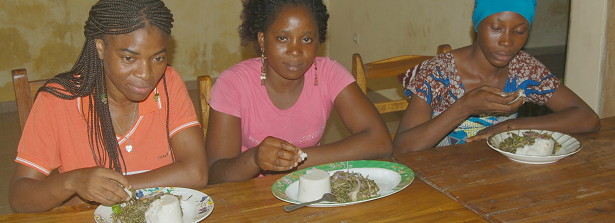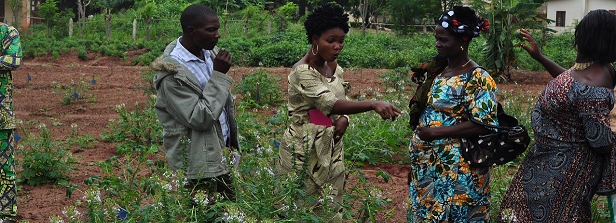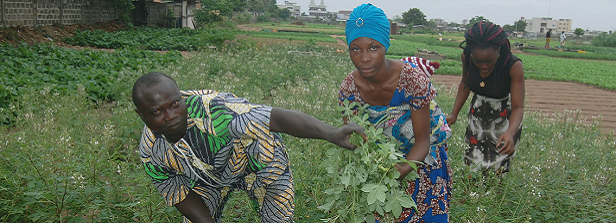Improved varieties of spider plant for Africa (Benin and Kenya)

Duration: January 2015 – January 2018. This project has been finalized.
Project information
Aim: Raising awareness of the nutritional characteristics of the spider plant (Cleome gynandra) and promoting its cultivation and consumption in Benin and Kenya. Nutritious, high-yielding and adapted cultivars of spider plant will be made available for vegetable production systems in Benin and Kenya at the end of this project.
Objective: Contribute to improved food and nutritional security for local communities and increased livelihoods for farmers.
Method: Screening of a worldwide collection of spider plant for nutritive value, drought resistance and leaf yield will be conducted and new varieties will be developed using genomics assisted breeding. Participatory varietal selection will be carried out with farmers and consumers in Benin and Kenya. Knowledge will be generated and disseminated through partnership with farmers’ associations, national agricultural research systems, supermarkets and restaurants.
Countries: Benin and Kenya.
Dutch policy goals: Increased sustainable agricultural production; and Improved access to nutrition.
Progress reports
Year 2: Cleome gynandra is a neglected and underutilized leafyvegetable with strong potential for improved nutrition and health in Africa. Researchers are exploring the diversity in Cleome gynandra in Africa and Asia in terms of nutritional value and leafyield. Taking advantage of the short cycle of the species and genomic tools, high-yielding and nutrient-rich cultivars will be developed in collaboration with farmers and consumers for introduction in or revamping of vegetable markets in Benin and Kenya. Experiments are also carried out in order to improve the current production practices of local communities. Traditional knowledge related to the species is documented in indigenous communities in both countries and integrated in promotion strategies. Testing panels and farmers’ field schools are also conducted to assess the acceptance of the species. New knowledge will be generated and disseminated through partnership with farmers’ associations, national agricultural research systems, supermarkets and restaurants. Upscaling cultivation of Cleome gynandra in urban and peri-urban areas will provide an additional source of income for farmers and seed companies and a source of health-beneficial compounds for consumers.
Year 3: To stimulate the cultivation of the nutritious Spider plant in West- and East Africa, the research team first collected and documented 164 wild and cultivated Spider plant varieties (accessions) in West Africa and 59 varieties in Kenya. In order to develop the best agronomic practices for higher leaf yields, the team conducted field trials with the most promising varieties in Benin. The highest yield was obtained when plants were transplanted at around 450,000 plants per hectare and cut every two weeks. In Kenya, a protocol for a systematic evaluation of Spider plant’s drought tolerance was developed in collaboration with farmers.
Variation in anthocyanin
Wageningen UR tested spider plant germplasm for variation in anthocyanin production and nutritional characteristics. The researchers assessed the quantitative variation in carotenoids, tocopherols and chlorophylls in 48 varieties. The same analysis will be conducted in 2016 for 52 varieties selected from the collections of the University of Abomey-Calavi and the KENRIK Centre for Biodiversity. This will help to select the most nutritious varieties.
Pilot farmers
To increase the adoption of new varieties and technologies to grow them, Hortitechs Development selected twelve pilot farmers from 3 municipalities in Benin. The team collected data about the agronomic performance as well as farmers’ perceptions on Spider plant cultivation during two growing seasons. The team also documented 52 recipes from 23 ethnic groups in 21 counties in Kenya. In Benin, Niger, Togo and Ghana, recipes and traditional uses were collected among 32 ethnic groups. This ethnobotanics research will be used to prepare factsheets and brochures with recipe ideas and information about the nutraceutical properties.
Final report
Summary of the results: Cleome gynandra is a neglected and underutilized leafy vegetable with strong potential for improved nutrition and health in Africa. Through this initiative, the first wide West Africa collection of the species established and Kenyan collection improved. Researchers explored the diversity in Cleome gynandra in Africa and Asia in terms of nutritional value and leaf yield. Taking advantage of the short cycle of the species and genomic tools, high-yielding and nutrient-rich cultivars were selected in collaboration with farmers and consumers for introduction in or revamping of vegetable markets in Benin and Kenya. Experiments were also carried out in order to improve the current production practices of local communities. Traditional knowledge related to the species is documented in indigenous communities in both countries and integrated in promotion strategies. Testing panels and farmers’ field schools were also conducted to assess the acceptance of the species. New knowledge have been generated and disseminated through partnership with farmers’ associations, national agricultural research systems, supermarkets and restaurants. Upscaling cultivation of Cleome gynandra in urban and peri-urban areas provides now an additional source of income for farmers and seed companies and a source of health-beneficial compounds for consumers.


